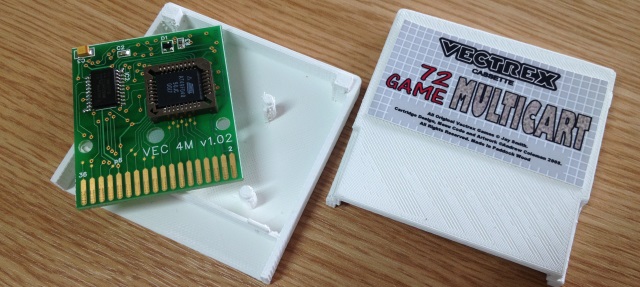With nearly 900 computers in its collection including some of the first home computers, such as the Sinclair ZX Spectrum and Apple II series, the Da Vinci 1.0 3D printer is an interesting new addition to the Centre for Computing History family. The museum chose this particular printer as it was economical, at £405, and has a plastic case, which locks so it is safe for the many children who visit the museum to be around. As the printer was at the lower end of the pricing scale it does not feature ultra-definition, high resolution specifications, or a fast print speed, but director Jason Fitzpatrick said he was more interested in showing the fundamentals of what it could do.
“From day one the museum has always been about tracing the past of computing history but we are also looking forward, and while looking contemporaneously, we try to get hold of the latest technology to inform people of what is coming,” said Fitzpatrick.
“And the 3D printer is an example of this: it’s a great exhibit as it’s functional and is always interesting for visitors.”
Another use for the 3D Printer has been to print a cartridge case that was missing from an old Vectrex consule, which could not be displayed as its wires were showing. The cartridge cases are extremely rare and to buy one would have been expensive, so the staff went online and found that somebody had designed a 3D model which they were able to download and print. The museum has also printed out name badges as well as Space Invader and Pac-Man characters that are sold in its shop.

“Unlike a normal printer, the 3D printer is making things to sell in the shop so it negates the cost of running,” says Fitzpatrick.
“So at some point it will be making money for use once we have paid the costs.”
The printer uses replaceable cartridges, which cost approximately £30, that are loaded in a similar way to a normal printer. Fitzpatrick said the printer knows how much filament is left so you do not ruin a job half way through and, although it has only one colour, it is extremely simple to use and practical.
“That is what has really opened my eyes up to 3D printing, having a practical need and a practical solution,” he said.
“In the case of the Vectrex consul cartridge somebody has done all the hard work and had the kindness to make it accessible for free. This is all made possible by the internet.”
With the 3D printer being such a success as both an exhibit and working machine the museum is already considering buying another. Fitzpatrick now has his eye on a higher spec model that has a 3D scanner, which will give the museum more flexibility in the range of objects it wants to print in future.
 Back to top
Back to top





